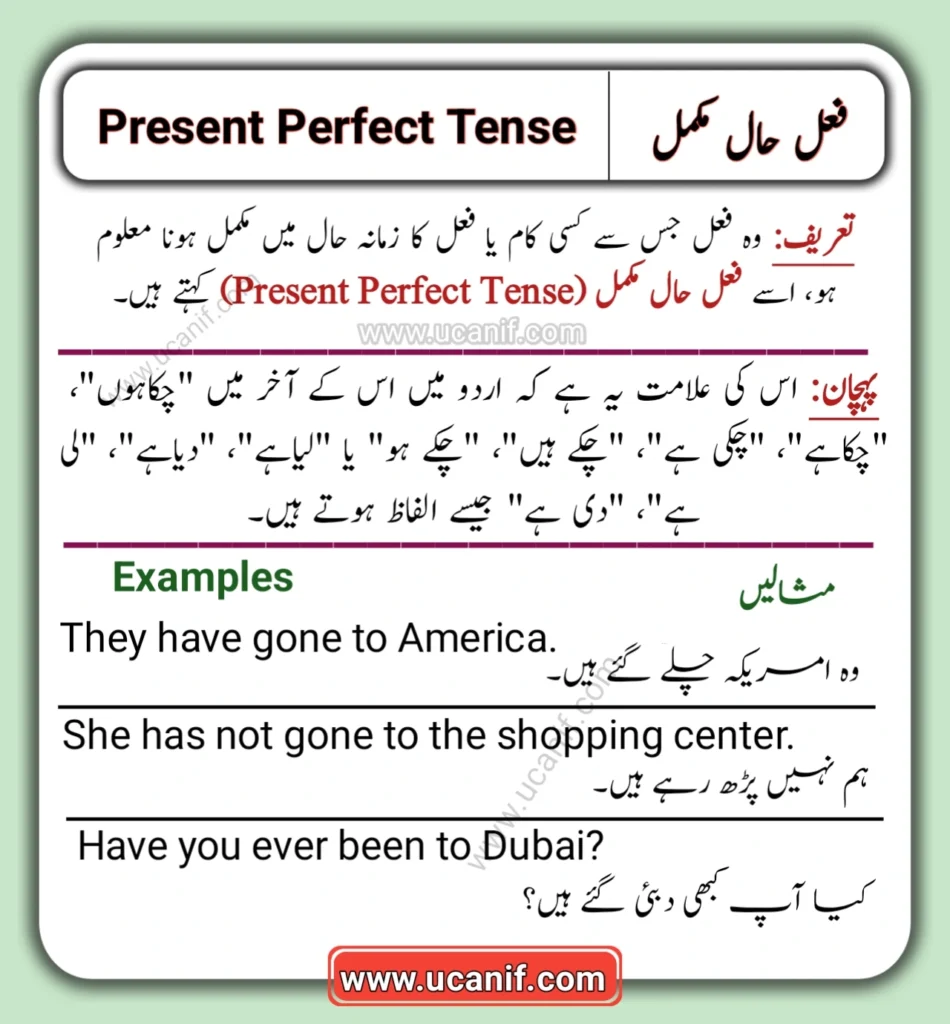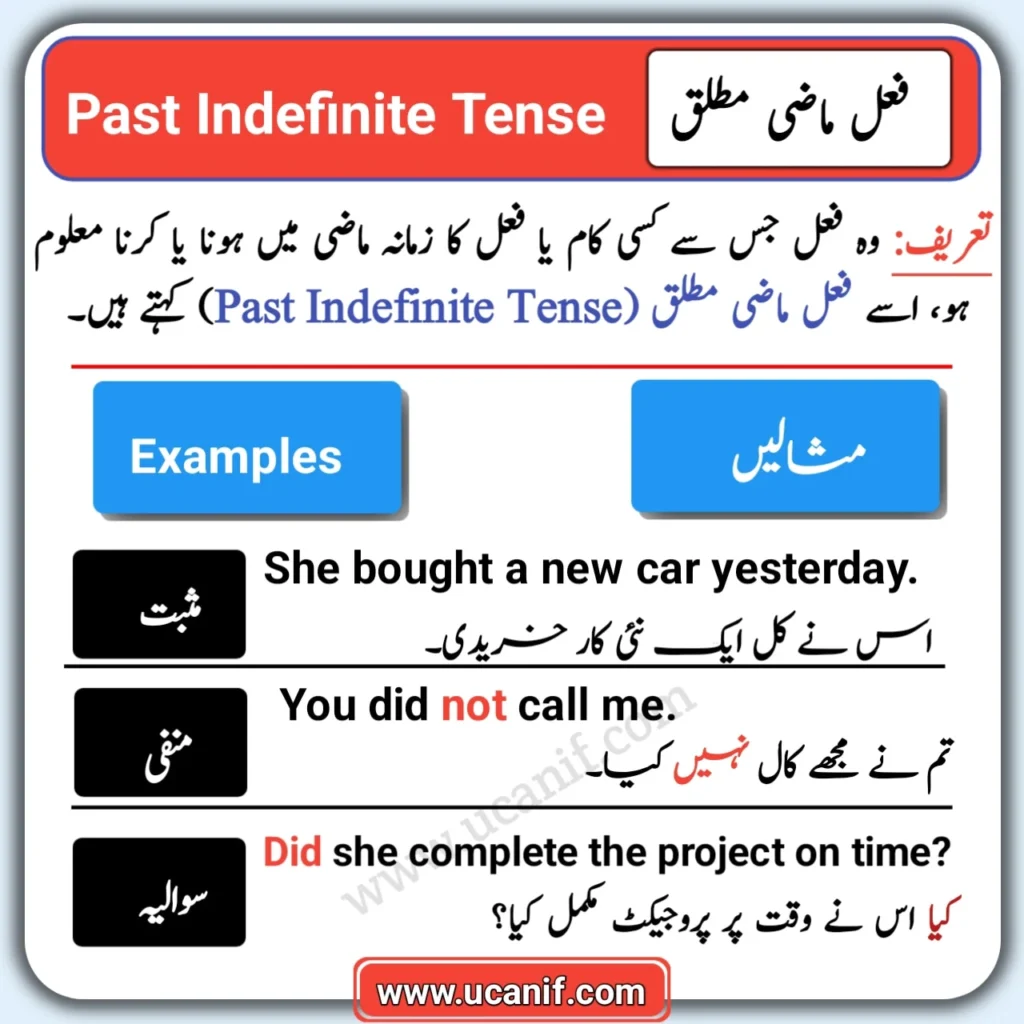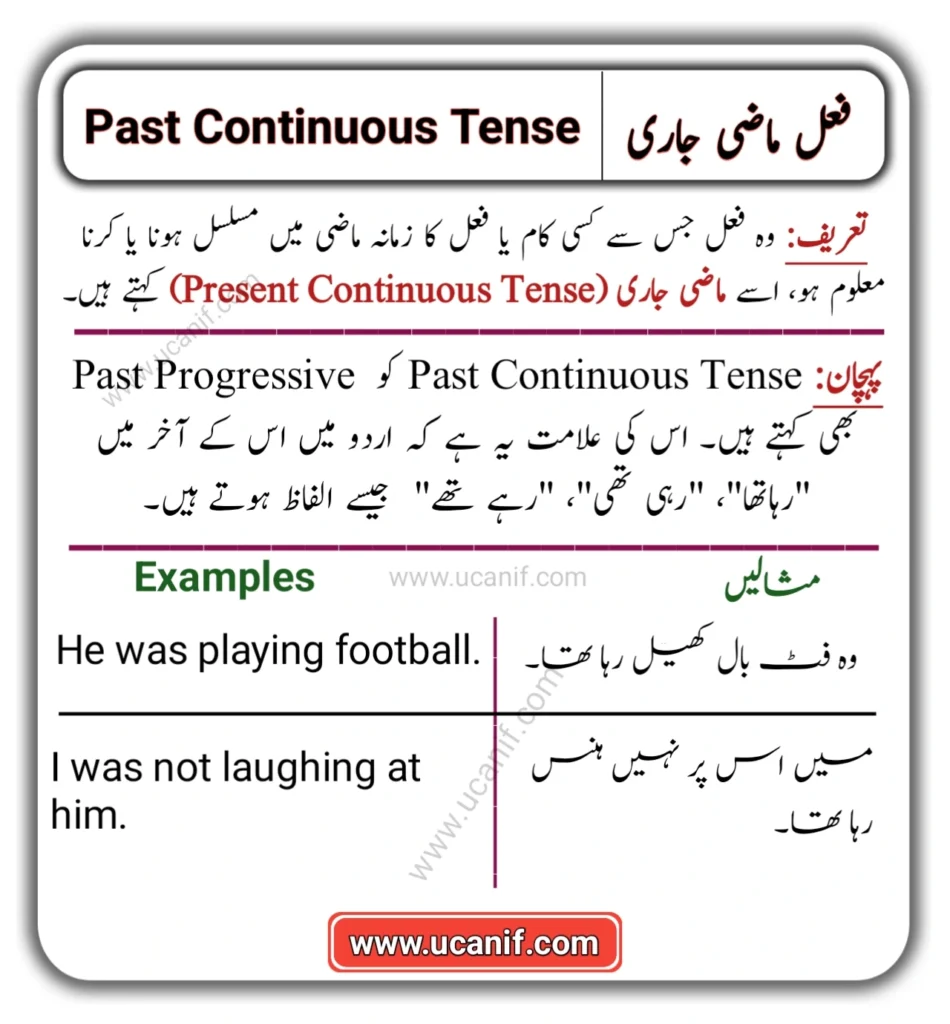Present Continuous Tense in Urdu & English with 70+ Examples
Present continuous tense in Urdu and English is a crucial aspect of language learning, enabling you to express ongoing actions in the present moment. Understanding the Present Continuous Tense in Urdu and English is essential for effective communication, as it allows you to convey actions happening right now.
In this article, we will delve deep into the Present Continuous Tense in Urdu and English, exploring its structure, usage, and practical examples. By the end of this comprehensive guide, you will have a solid grasp of the Present Continuous Tense in Urdu and be ready to use it confidently in your conversations and writing. So, let’s dive into the world of Present Continuous Tense in Urdu and English!
فعل حال جاری کو انگلش میں Present continuous tense کہتے ہیں۔اور آج کے سبق (Present Continuous Tense in Urdu) میں ہم Present Continuous Tense کے بارے میں تفصیل اور مثالوں کے ساتھ پڑھیں گے۔
Present Continuous Tense Definition in Urdu
فعل حال جاری (Present Continuous Tense- پِرَیزَینٹ کنٹینواس) کو Present progressive (پِریزَینٹ پروگریسیو) بھی کہتے ہیں۔
تعریف: وہ جملے جن سے زمانۂ حال (موجودہ زمانے) میں کسی کام کا جاری رہنا معلوم ہو، لیکن جاری رہنے کا وقت نہ معلوم ہو (کب ختم ہوگا) انہیں اردو میں زمانہ حال استمراری/جاری اور انگلش میں Present continuous tense کہتے ہیں۔
پہچان: اس کی علامت یہ ہے کہ اردو میں اس کے آخر میں “رہا ہوں“، “رہا ہے” ، “رہی ہے“، “رہے ہیں“، “رہے ہو” جیسے الفاظ ہوتے ہیں۔ جیسے:
- میں محنت کررہا ہوں۔
- وہ پڑھ رہا ہے۔
- وہ پوچھ رہے ہیں۔
- ہم سیکھ رہے ہیں۔
- تم آرام کر رہے ہو۔
- Is= اگر فاعل Third person singular یعنی HE, SHE, IT ہو یا Singular nouns (واحد اسم ) ہو؛ تو is کا استعمال ہوتا ہے۔
- Are = اگر فاعل Third person singular کے علاؤہ ہو یعنی WE, YOU, THEY یا Plural nous (جمع اسم) ہو؛ are کا استعمال ہوتا ہے۔
- Am = اگر فاعل First-person singular (واحد متکلم) یعنی I ہو؛ am کا استعمال ہوتا ہے۔
- Affirmative (مثبت)
- Negative (منفی)
- Interrogative (سوالیہ)
- Negative Interrogative (منفی سوالیہ)
Present Continuous Tense in Urdu: Affirmative (مثبت جملے)
مثبت جملوں کے قاعدے (Rules):
① انگریزی میں Present Indefinite Tense کے جملوں میں فعل فاعل اور مفعول کی ترتیب کے لیے ایک فارمولا (Structure) یاد رکھیں!
- Structure (فارمولا):
- Subject(فاعل) + is/am/are + verb(فعل) + object(مفعول)
② اگر ہمارا Subject (فاعل) Third-person singular (واحد غائب) یعنی He, She, It ہو, یا Singular noun (واحد اسم) ہو؛ تو is کا استعمال ہوتا ہے۔
| English | Urdu |
|---|---|
| She is singing a song. | وہ ایک گانا گا رہی ہے۔ |
| The dog is barking loudly. | کتا زور سے بھوک رہا ہے۔ |
| The cat is chasing a mouse. | بلی ایک چوہے کا پیچھا کر رہی ہے۔ |
| He is playing football. | وہ فٹبال کھیل رہا ہے۔ |
| She is reading a book. | وہ ایک کتاب پڑھ رہی ہے۔ |
③ اگر Subject (فاعل) First-person singular (واحد متکلم) یعنی I ہو؛ تو am کا استعمال ہوتا ہے۔
| English | Urdu |
|---|---|
| I am reading books with my friend. | میں اپنے دوست کے ساتھ کتابیں پڑھ رہا ہوں۔ |
| I am interpreting my dreams. | میں اپنے خوابوں کی تعبیر کر رہا ہوں۔ |
| I am exercising in the morning. | میں صبح کو ورزش کر رہا ہوں۔ |
| I am driving my new car. | میں اپنی نئی کار کو چلا رہا ہوں۔ |
| I am cooking food for my mother. | میں اپنی ماں کے لئے کھانا بنا رہا ہوں۔ |
④ اگر Subject (فاعل) We, You, They ہو یا Plural nouns (جمع اسم) ہو؛ تو are کا استعمال ہوتا ہے۔
| English | Urdu |
|---|---|
| We are organizing a picnic. | ہم پکنک کی تیاری کر رہے ہیں۔ |
| You are building a new house. | تم نیا گھر بنا رہے ہو۔ |
| You are cleaning the house. | تم گھر صفائی کر رہے ہو۔ |
| We are planting trees in the garden. | ہم باغ میں درخت لگا رہے ہیں۔ |
| They are cooking delicious meals. | وہ مزیدار کھانے پکا رہے ہیں۔ |
| We are playing cricket. | ہم کرکٹ کھیل رہے ہیں۔ |
| You are studying together. | تم مل کر پڑھ رہے ہو۔ |
| We are hiking in the mountains. | ہم پہاڑوں میں ہائکنگ کر رہے ہیں۔ |
| You are shopping for new clothes. | تم نئے کپڑے خرید رہے ہو۔ |
| We are studying for our exams. | ہم اپنے امتحان کی تیاری کر رہے ہیں۔ |
Present Continuous Tense in Urdu: Negative (منفی جملے)
منفی جملوں کے قاعدے (Rules):
① انگریزی میں Present Indefinite Tense کے جملوں میں فعل فاعل اور مفعول کی ترتیب کے لیے ایک فارمولا (Structure) یاد رکھیں!۔
- Structure (فارمولا):
- Subject(فاعل) + is/am/are +not+ verb-ing(فعل) + object(مفعول)
جیسے اگر ہمیں کہنا ہو: “ہم کسی کو دھوکہ نہیں دے رہے ہیں۔”
تو ہم سب سے پہلے Subject (فاعل) لائیں گے جو اس جملہ میں لفظ “ہم (We)” ہے۔ اس کے helping verb یعنی “are” لائیں گے، اس کے بعد “نہیں” کا معنی پیدا کرنے کیلیے “not” لائیں گے.اس کے بعد فعل کی پہلی شکل کے ساتھ ing بڑھادیں گے (ing Form of verb) جو اس جملہ “دھوکہ دینا(betraying ) ہے۔اور آخر میں مفعول لائیں گے جو اس جملہ میں “کسی کو (anyone)” ہے۔بس جملہ تیار ہے۔
- We are not betraying anyone.
- (وی آر نَوْٹ بَیٹرےانگ ایْنِی وَن)
- ہم کسی کو دھوکہ نہیں دے رہےہیں۔
② اگر ہمارا Subject (فاعل) Third-person singular (واحد غائب) یعنی He, She, It ہو, یا Singular noun (واحد اسم) ہو؛ تو is کے ساتھ not کا استعمال ہوتا ہے۔ یا دونوں کو مخفف کرکے isn’t کا استعمال ہوتا ہے۔
| English | Urdu |
|---|---|
| She is not studying French. | وہ فرانسیسی نہیں پڑھ رہی۔ |
| He is not wearing his glasses. | وہ اپنی چشمہ نہیں پہن رہا۔ |
| It is not raining outside. | باہر بارش نہیں ہورہی ہے۔ |
| He is not eating lunch right now. | وہ ابھی دوپہر کا کھانا نہیں کھا رہا۔ |
| He is not playing the piano tonight. | وہ آج رات پیانو نہیں بجا رہا۔ |
| It is not working properly. | یہ درست طریقے سے کام نہیں کر رہا ہے۔ |
| It is not swimming in the pond. | یہ تالاب میں تیر نہیں رہا ہے۔ |
③ اگر Subject (فاعل) First-person singular (واحد متکلم) یعنی I ہو؛ تو am کے ساتھ not کا استعمال ہوتا ہے۔
I am not eating right now
| English | Urdu |
|---|---|
| Inn am not watching TV right now. | میں ابھی ٹی وی نہیں دیکھ رہا۔ |
| Inn am not playing soccer this evening. | میں آج شام فٹبال نہیں کھیل رہا ہوں۔ |
| Inn am not studying at the moment. | میں اس وقت پڑھائی نہیں کر رہا ہوں۔ |
| Inn am not working today. | میں آج کام نہیں کر رہا ہوں۔ |
| Inn am not eating right now. | میں ابھی کھانا نہیں کھا رہا۔ |
④ اگر Subject (فاعل) We, You, They ہو یا Plural nouns (جمع اسم) ہو؛ تو are کے ساتھ not کا استعمال ہوتا ہے۔
| English | Urdu |
|---|---|
| We are not going to the park today. | ہم آج پارک نہیں جا رہے ہیں۔ |
| The students are not listening to the teacher. | طلباء اساتذہ کی بات نہیں سن رہے ہیں۔ |
| You are not playing football right now. | تم ابھی فٹبال نہیں کھیل رہے ہو۔ |
| They are not studying for the exam. | وہ امتحان کے لئے نہیں پڑھ رہے ہیں۔ |
| The dogs are not barking loudly. | کتے زور سے بھونک نہیں رہے ہیں۔ |
اب ہم کچھ اور مثالوں کو دیکھ لیتے ہیں تاکہ سمجھنا آسان ہوجائے۔
Present Continuous Tense in Urdu: Interrogative (سوالیہ)
سوالیہ جملوں کا قاعدہ (Rule):
فعل حال جاری (Present continuous tense) کے سوالیہ جملے بنانے کیلیے بس ایک چیز کی ضرورت ہے subject اور helping verb یعنی is/are/am کی جگہ بدلنے کی یعنی پہلے is/are/am لائیں گے اس کے بعد subject۔ اور بس جملہ تیار ہوجائے گا۔ جیسے:
| مثبت | سوالیہ |
| He is playing football. | Is he playing football? |
| وہ فٹبال کھیل رہا ہے۔ | کیا وہ فٹبال کھیل رہا ہے؟ |
Present Continuous Tense Interrogative Sentences in Urdu
چلیے مثالوں سے سمجھتے ہیں!
یہ تو YesNo والے سوالیہ جملے ہوئے؛ لیکن اگر WH Family والے سوالیہ جملے بنانا ہو؛ تو YESNO والے سوالیہ جملوں ہی کے شروع میں WH Word بڑھا دیں گے۔ جیسے:
| Question | WH Question |
| Is he playing football? | Why is he playing football? |
| کیا وہ فٹبال کھیل رہا ہے؟ | وہ فٹبال کیوں کھیل رہا ہے؟ |
Present Continuous Tense Examples In Urdu
- میں پڑھا رہا ہوں۔
- I am teaching.
- آپ ویڈیو دیکھ رہے ہیں۔
- You are watching.
- وہ سو رہا ہے۔
- He is sleeping.
- خالد کھا رہا ہے۔
- Khalid is eating.
- حامد رو رہا ہے۔
- Hamid is crying.
- ہوا چل رہی ہے۔
- It is blowing.
- پرندے اڑ رہے ہیں ہیں۔
- Birds are flying.
The Other Present Tenses in Urdu
| The 4 Present Tenses | Examples |
|---|---|
| Present Indefinite Tense | I go |
| Present Continuous Tense | I am going |
| Present Perfect Tense | I have gone |
| Present Perfect Continuous Tense | I have been going |
آج ہم نے Present Continuous Tense in Urdu کے جملوں کو بنانا سیکھا۔ اور مثبت، منفی وغیرہ جملہ بنانے کا طریقہ جانا۔ امید ہے آپ سب سمجھ گئے ہوں گے۔ لیکن اگر کچھ سمجھنے میں دشواری ہو؛ تو آپ Comment کرکے ضرور پوچھ لیں۔
In conclusion, the mastery of the Present Continuous Tense in Urdu and English is a skill that holds immense value in the world of language learning. The ability to wield the Present Continuous Tense in Urdu and English proficiently empowers you to convey ongoing actions in both languages with precision and clarity.
Throughout this article, we’ve explored the intricacies of the Present Continuous Tense in Urdu and English, delving into its formation, versatile applications, and practical examples. By now, you should have a comprehensive grasp of the Present Continuous Tense in Urdu and English, equipping you to confidently use it in conversations, writing, and various linguistic endeavors.
As you continue to hone your language skills, remember that the Present Continuous Tense in Urdu and English serves as a valuable tool for enhancing your communication prowess. So, keep practicing and incorporating the Present Continuous Tense in Urdu and English into your linguistic repertoire, opening doors to more impactful and expressive conversations in both languages.





